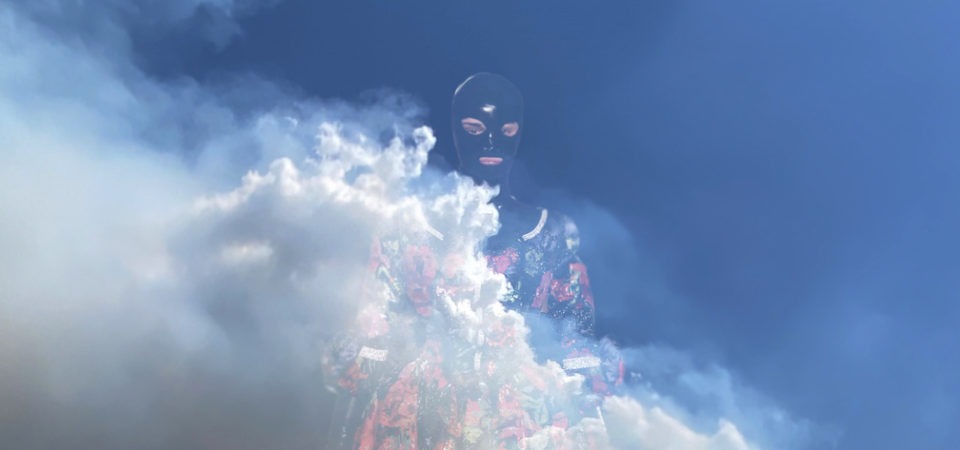On September 6, 2020, I was enjoying the view of the San Gabriel Mountains from a lookout point on Mulholland Drive. We were still in the depths of lockdown due to the Covid-19 pandemic and this outdoor space was a refuge. Looking out across the human sprawl that coats the valleys, I focused on the mountains and their foothills. I searched for the places I grew up exploring. I reminisced about the more than human neighbors that had been my friends. They, too, called these majestic mountains and valleys home. As I watched, a tiny wisp of smoke appeared, spiraling its way skyward.
The Bobcat Fire, as it came to be known, spread quickly, becoming one of the largest fires on record in Los Angeles County, burning 115,796 acres and making several rare and endangered species face extinction including the Santa Ana sucker fish and the Southern California mountain yellow-legged frog.
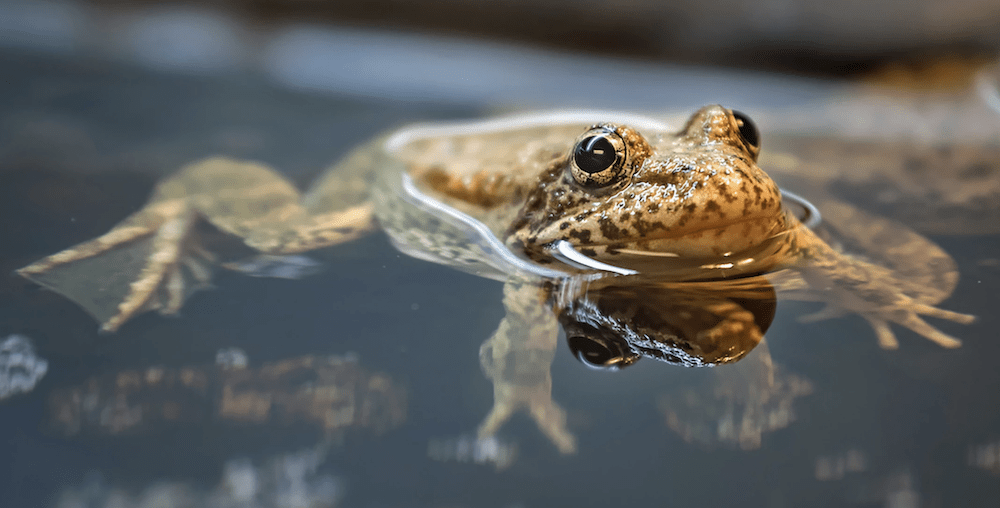
An endangered mountain yellow-legged frog. (Jamie Pham / Los Angeles Zoo). Bobcat fire aftermath threatens endangered species in San Gabriel Mountains
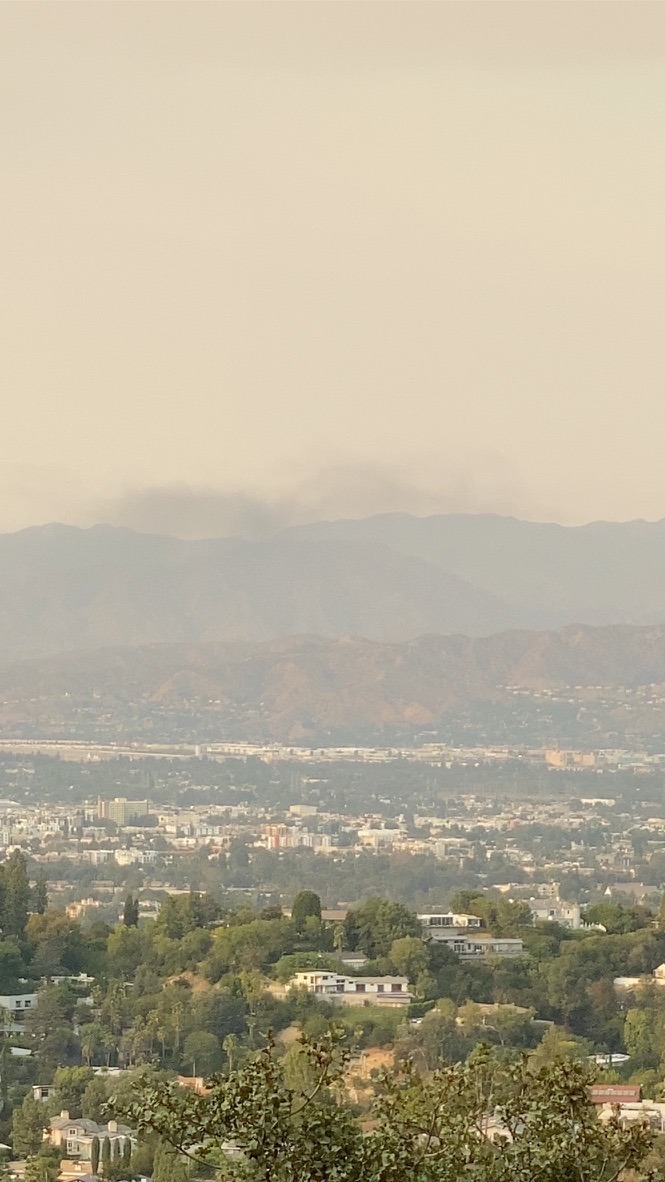
The start of the Bobcat Fire viewed from Mulholland Drive.
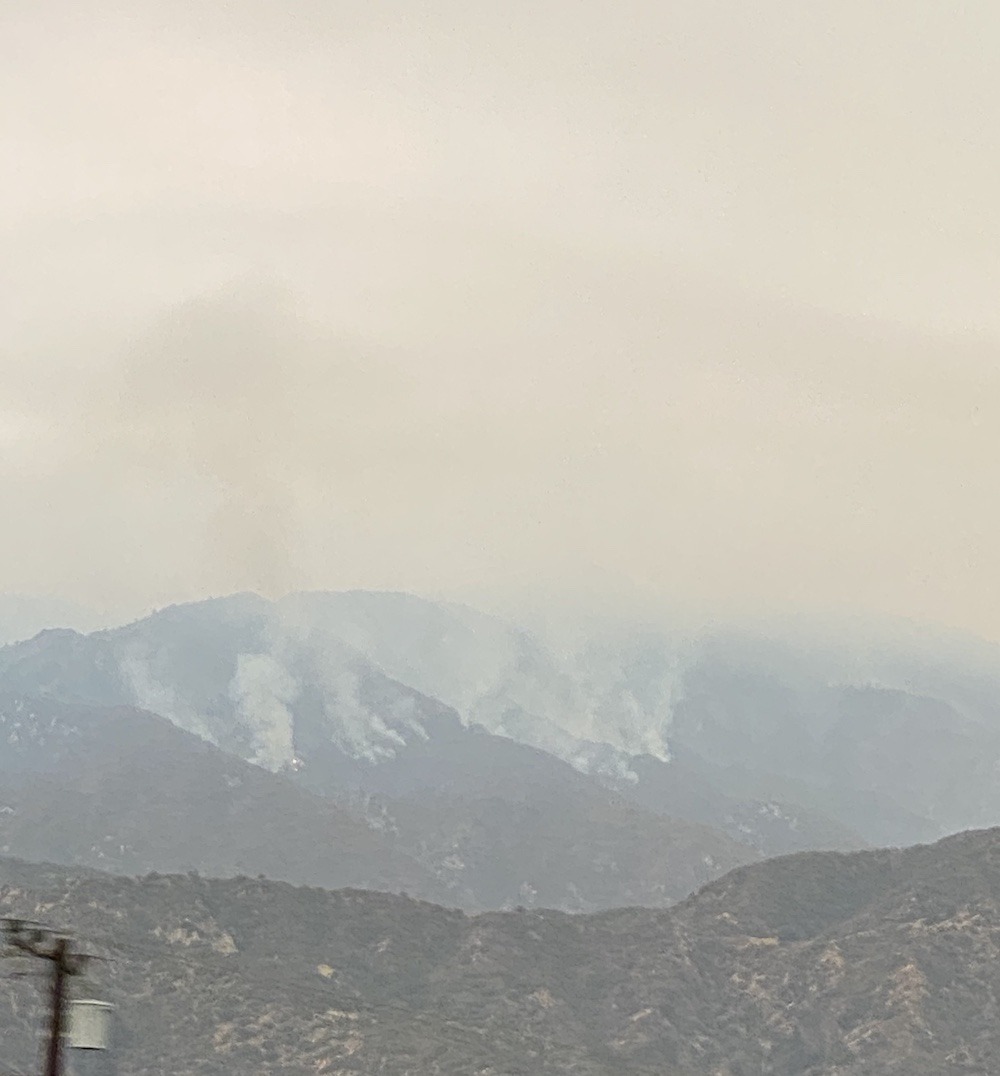
Two hours later
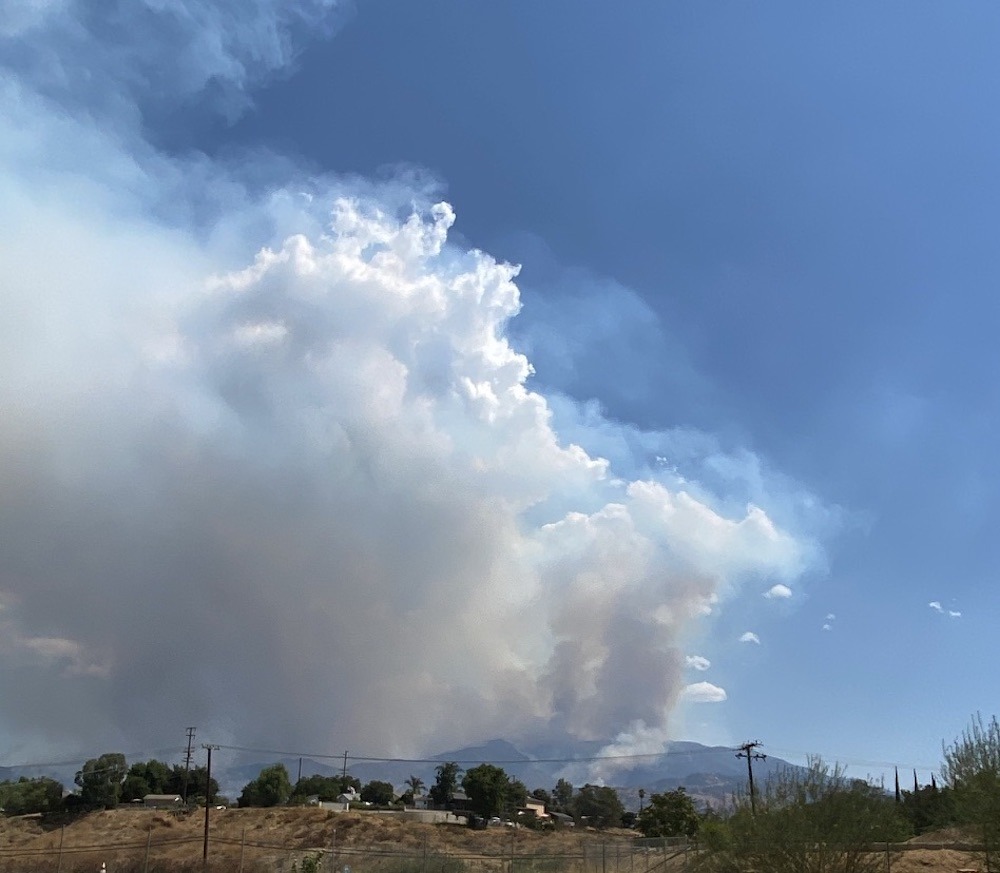
View from the 210 freeway as we traveled east away from the smoke
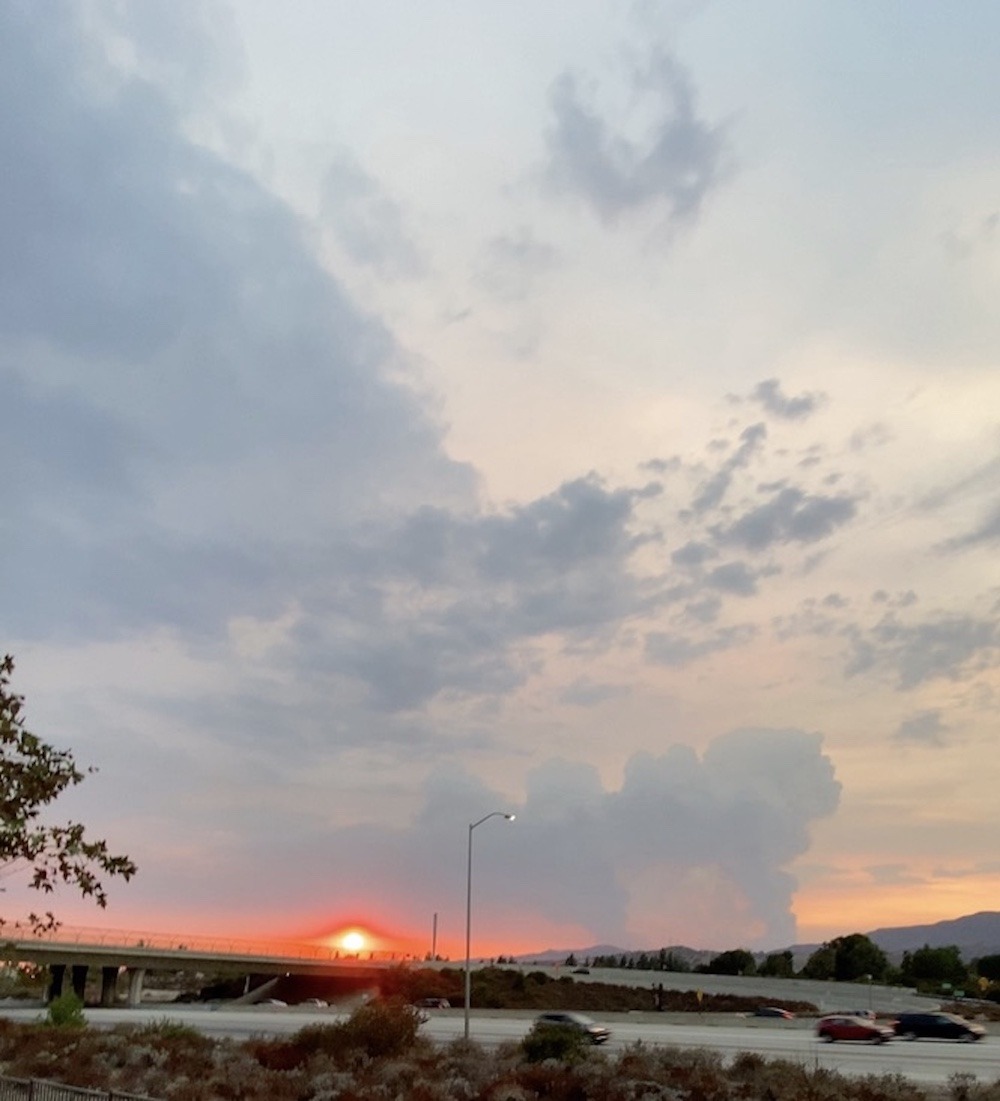
View from east of the fire at sunset
I photographed the fire as it raged, and flames poured down the side of the mountain like lava. When I contacted local friends with words of sorrow, they were nonplussed saying things like, “We always have fires…it’s just Los Angeles…They won’t let it get to people or houses or businesses or stuff…good thing it’s Covid and we have masks”.
Los Angelean’s anthropocentric perception, so dedicated to consumer ideals, really weighed heavy on my heart. In response, I digitally collaged super models wearing designer clothing that emphasized mask-wearing during the pandemic over the images of the fire. Making large direct to media prints on Dibond, the outcome screams “expensive product”, which really is the point I am making.
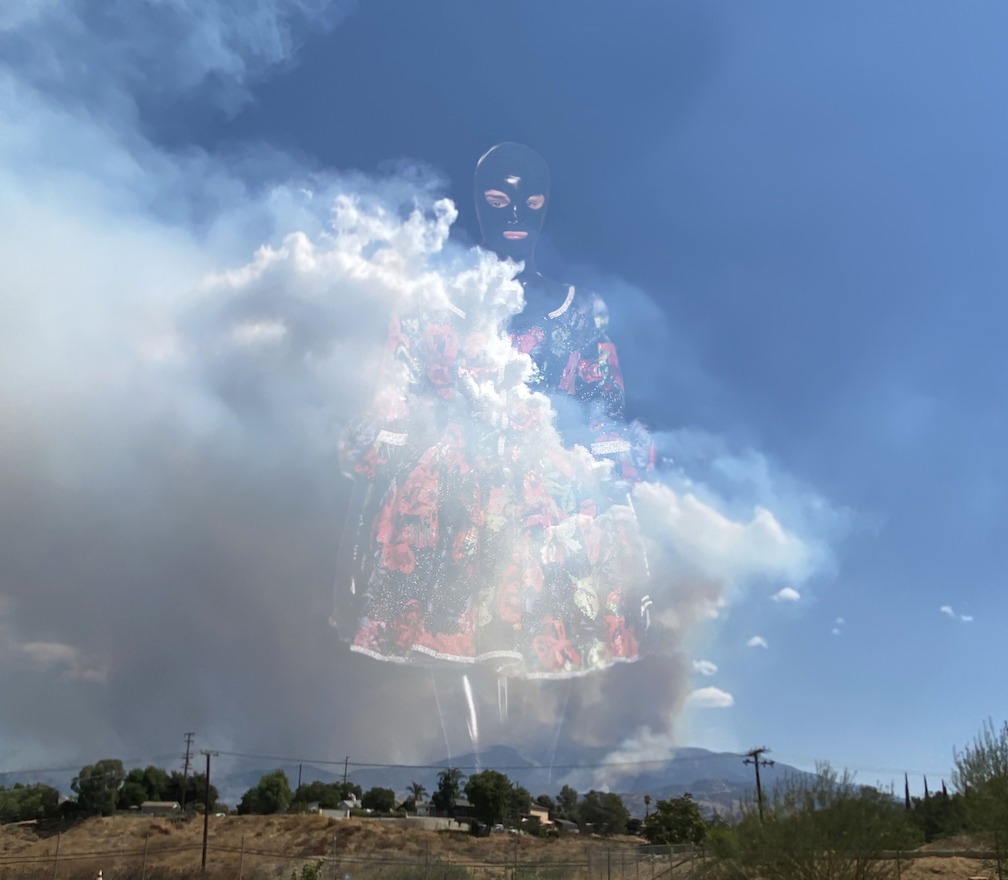
The Spirit of Los Angeles
iPhone photography, digital collage, direct to media print on Dibond, 34.5×39.5”
2020 & 2022
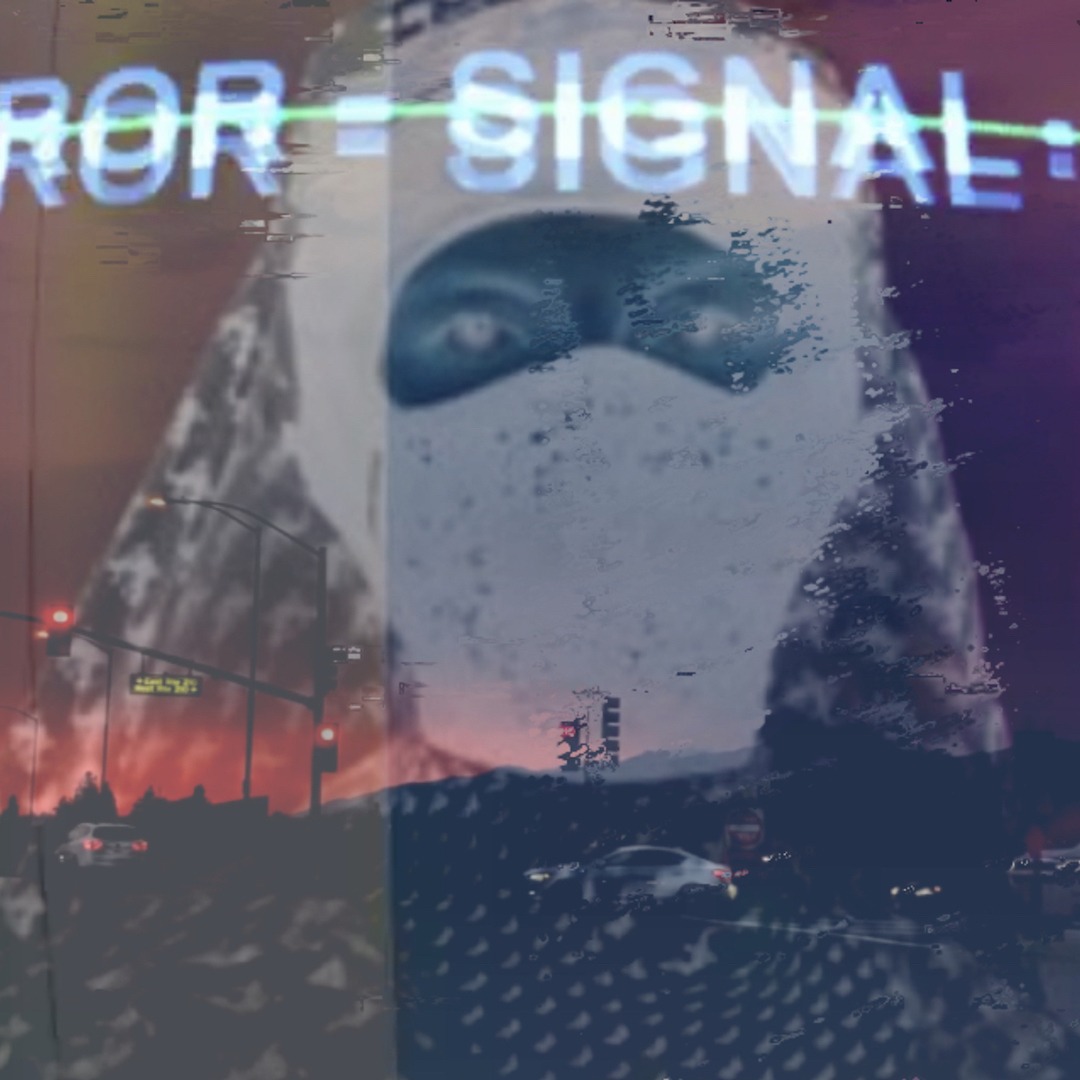
The Spirit of Los Angeles
iPhone photography, digital collage, direct to media print on Dibond, 34.5×34.5”
2020 & 2022
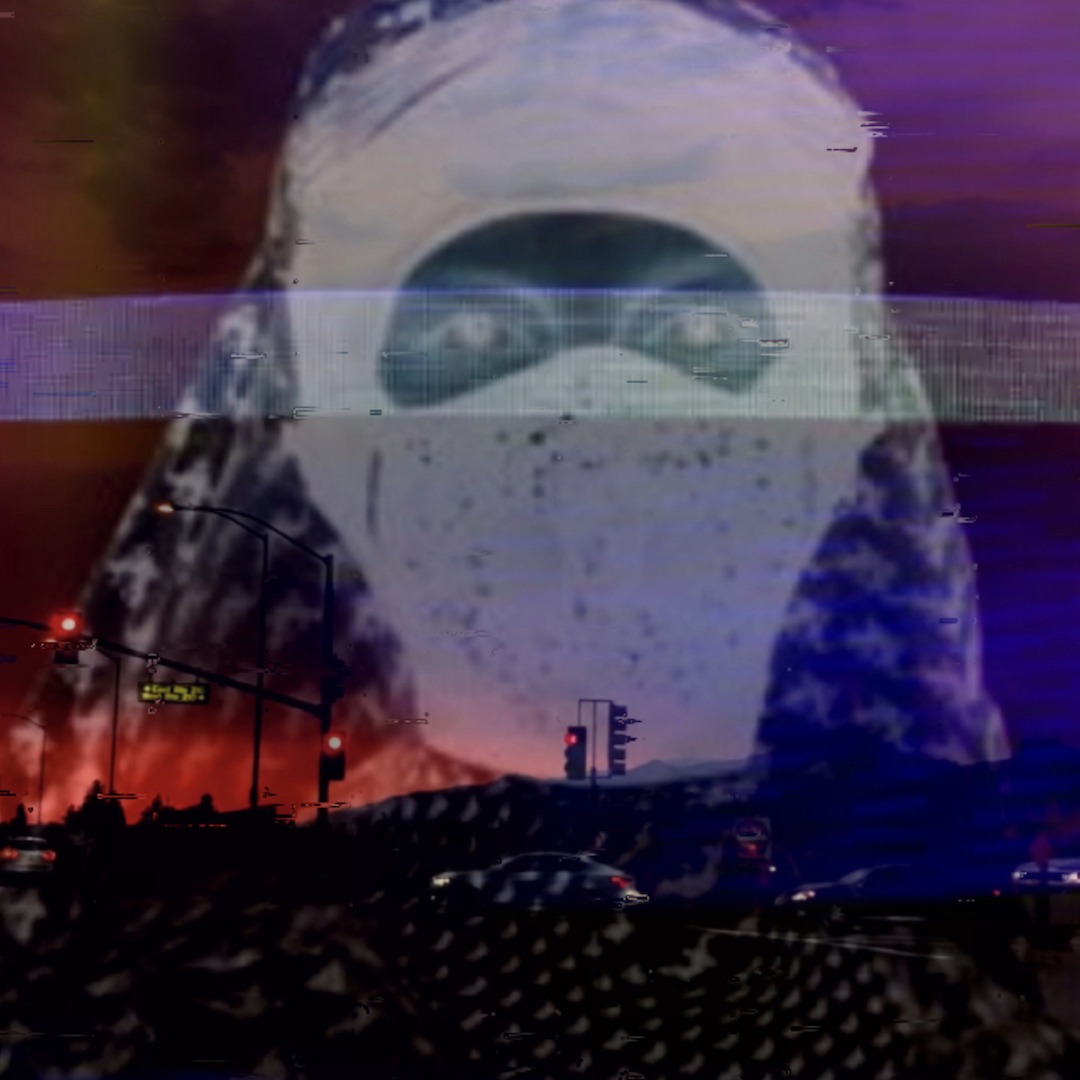
The Spirit of Los Angeles
iPhone photography, digital collage, direct to media print on Dibond, 34.5×34.5”
2020 & 2022
Post Carbon Institute’s resilience course makes an important point when they note the need to shift our cultural story from the consumer economy to a conserver economy. –postcarbon.org
But how?
The industrial revolution and particularly the second industrial revolution brought with them an enormous increase in production. And the nightmarish need for exponential growth requiring extraction of global resources. Because people were unaccustomed to consuming goods beyond their needs, this excess of products was in danger of becoming unused, stored, and ignored, ultimately being nothing more than waste. Manufacturers, with the support of our governments, devised a plan to change our cultural story from one where our well-being was supported by satisfying experiences with each other and our world, to one of consumerism which links human satisfaction to the buying of manufactured products. Through advertising and marketing, our cultural story shifted quickly. Humans went from being referred to as people, to being referred to as consumers. The belief system that followed and remains strong today concerns economic growth.
Advertising and marketing are effective means used to shift consciousness. In fact, they are used every day to manipulate public awareness of climate change and deter most people away from understanding the devastation anthropocentric behavior brings.
I wonder if using advertising and marketing to shift our global cultural story once again might work? Can the tools used to turn people into consumers be used to turn consumers into people who derive pleasure and satisfaction from experiences with the Earth community, human and more than human alike? Can these tools be used to re-ignite human empathy for our mutual home, Earth? Can artists infiltrate human belief systems with enough force to effectively shift perception?
Sadly, we are out of time. The most recent IPCC report issued a Code Red for Humanity, caused by human-induced climate change. https://news.un.org/en/story/2021/08/1097362
This is the sixth mass extinction of species. We are in it. We’ve crossed the event horizon and there is no turning back. What we can do is exit this world as loving compassionate beings. We may not be able to undo what we have done, but we can re-member our higher selves and reconnect to the global ecosystem we share with all life on Earth.
Making artwork requiems with the places experiencing extinction events brings me closer to the beings I love. Engaging, connecting, listening, helping, and ultimately remembering them is what I love doing. It fuels the palpable invisibility of my soul.
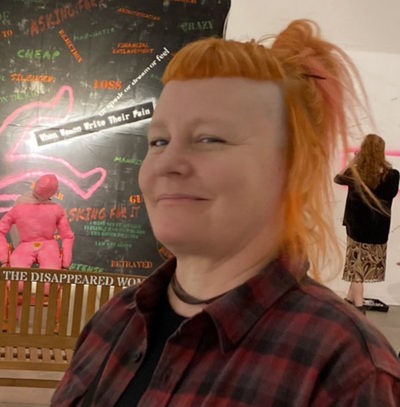 Quin de la Mer is an artist known for their conceptual work and is part of the New Genres art movement. Quin makes artworks inspired by their unique perceptual experiences and the intolerable emotions they feel in response to the formations that arise out of collective agreements (aka “hive mentality”). Their ideas typically marry philosophical notions with artistic practice.
Quin de la Mer is an artist known for their conceptual work and is part of the New Genres art movement. Quin makes artworks inspired by their unique perceptual experiences and the intolerable emotions they feel in response to the formations that arise out of collective agreements (aka “hive mentality”). Their ideas typically marry philosophical notions with artistic practice.
Quin holds an MFA degree in Creative Inquiry & Interdisciplinary Arts from California Institute of Integral Studies where they also embarked on their Doctoral degree in Philosophy, Cosmology, Consciousness & Integral Ecologies. Taking a hiatus from their doctoral studies to focus more intensely on their art practice, Quin relocated to Newcastle upon Tyne, UK.
Presently they are an MFA student at Newcastle University.
Quin de la Mer’s website.
Quin’s Instagram page.
Quin’s What’s Next for Earth’s page.
This article is part of the MAHB Arts Community‘s “More About the Arts and the Anthropocene”. If you are an artist interested in sharing your thoughts and artwork, as it relates to the topic, please send a message to Michele Guieu, Eco-Artist and MAHB Arts Community coordinator: michele@mahbonline.org.
Thank you. ~

